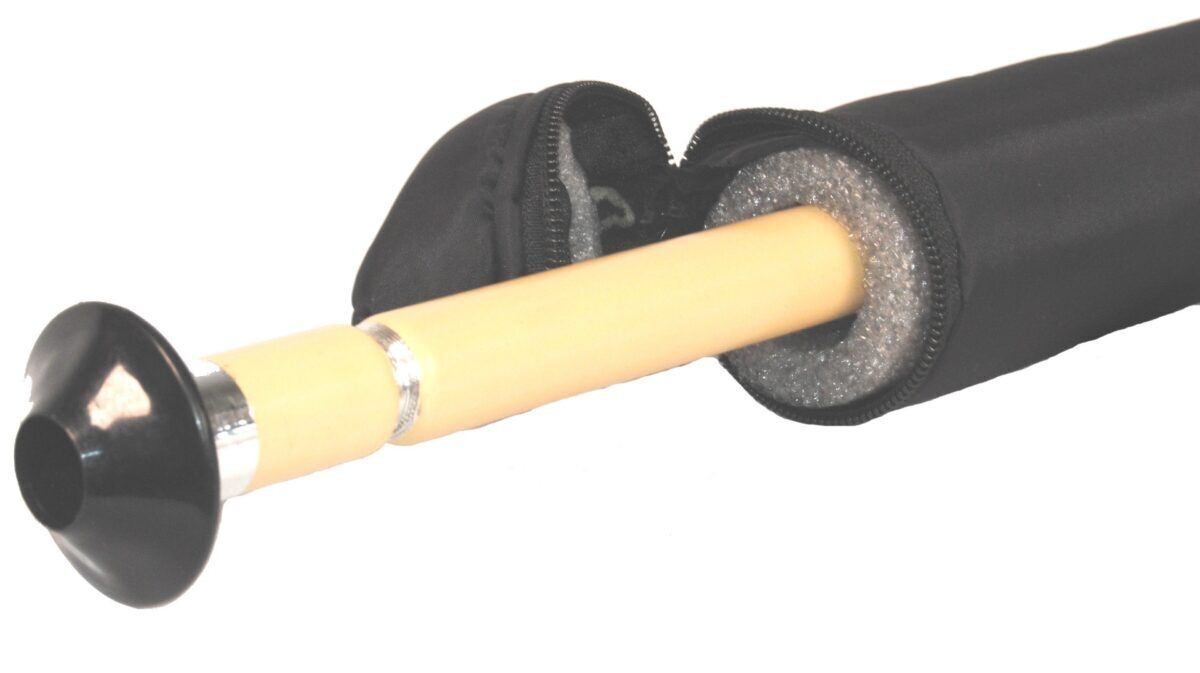-40%
Masterwork Turkish Ney inc Case 70cm flute light
$ 27.47
- Description
- Size Guide
Description
Masterwork Turkish Ney inc Case 70cm flute lightItem Description
Genuine Imported Turkish Ney by Masterwork
Set contains a Plastic Ney. The ney is 70cm / 27.5" long. Includes mouthpiece.
Its sound is loud, warm, and they are popular among all players.
Comes with a zip soft case. Si (Kz) Ney --> 68-72 cm.
(This is a Si Tune Ney)
Dimensions when in case: 77 x 7 x 7cm / 30 x 2.75" x 2.75".
These are made to a high standard. We also sell a bamboo ney. See our other listings.
We also sell Ney cases and single Ney and a range or Turkish instruments and indeed instruments from all over the world.
This was personally sourced at Masterwork, Turkey and imported back to UK. Item will ship from UK.
Background
The Turkish ney is an end-blown reed flute, an Ottoman variation on the ancient ney. Together with the Turkish tanbur lute and Turkish kemençe fiddle are considered the most typical instruments of Classical Turkish music. The ney also plays a primary role in the music of the Mevlevi Sufi rites (semâ).
A feature that distinguishes it from similar instruments of other cultures is the flared mouthpiece or lip-rest, called a bashpare, traditionally made of water buffalo horn, ivory, or ebony, but in modern times many are plastic or similar durable material.
The Turkish ney is played by pressing the bashpare against nearly-closed lips and angling the flute so that a narrow air-stream can be blown from the center of the lips against the interior edge to the left or right, depending on whether the flute is left- or right-handed in construction. This technique gives a lower volume, but a better controlled sound compared to the technique used with the Persian ney or the Mongolian tsuur, which are played by tucking the mouthpiece under the upper lip and making contact with the teeth.
Besides the finger holes, the pitch is altered by adjusting the embouchure, angle and force of the breath, with more forceful producing the higher pitches.
Compared to most fipple flutes and reed instruments, the ney is very difficult to play at first, often taking several weeks of practice to produce a proper sound at all, and even more to produce the full range of pitches. A skilled ney player can sound around 100 identifiable different tones in a two-and-a-half octave range or more.
Sizes
Before the tone naming convention do-re-mi-etc.. was adopted in Turkey, the notes had full long names which still partially are in use in ney circles, for example as names of fingering for a given perde (the set of pitches used in the performance).
Neys come in many lengths, each producing a different key. Professional players usually possess a range of ney in different keys so they match to other instruments in an ensemble.
In some Turkish musical circles, the "pitch" (akord) of a ney is determined by the tone produced of its rast perde. For example some refer to the note generated with all holes closed, meaning Davud would be in E, Bolahenk nsfiye would be in D, and Sah would be in F.
In others, the pitch is determined using the note (perde) which matches A=440 Hz (diyapazon). This pitch is one note higher, e.g., Mansur being A/La rather than G/Sol. The lengths below are approximate, as it can vary somewhat due to the natural characteristics of the individual reed.
Payment
We require payment by paypal. All major credit and debit cards are accepted by paypal (no paypal account necessary).
All our items are posted first class in the UK. We ship all items within 3 working days, usually faster.
We use recycled products where we can. All items are professionally packed.
All items are new unless stated.
Returns
Returns accepted within 30 days. Buyer pays return costs. There is a returns slip included with your item to make the process easier.
Please contact us on the email address provided on the slip if you have any questions.
Copyrights (c) 1997-2020 Terrapin Trading Ltd. All rights reserved.
The Turkish ney is played by pressing the bashpare against nearly-closed lips and angling the flute so that a narrow air-stream can be blown from the center of the lips against the interior edge to the left or right, depending on whether the flute is left- or right-handed in construction. This technique gives a lower volume, but a better controlled sound compared to the technique used with the Persian ney or the Mongolian tsuur, which are played by tucking the mouthpiece under the upper lip and making contact with the teeth. Compared to most fipple flutes and reed instruments, the ney is very difficult to play at first, often taking several weeks of practice to produce a proper sound at all, and even more to produce the full range of pitches. A skilled ney player can sound around 100 ident
The Turkish ney is played by pressing the bashpare against nearly-closed lips and angling the flute so that a narrow air-stream can be blown from the center of the lips against the interior edge to the left or right, depending on whether the flute is left- or right-handed in construction. This technique gives a lower volume, but a better controlled sound compared to the technique used with the Persian ney or the Mongolian tsuur, which are played by tucking the mouthpiece under the upper lip and making contact with the teeth. Compared to most fipple flutes and reed instruments, the ney is very difficult to play at first, often taking several weeks of practice to produce a proper sound at all, and even more to produce the full range of pitches. A skilled ney player can sound around 100 ident




















